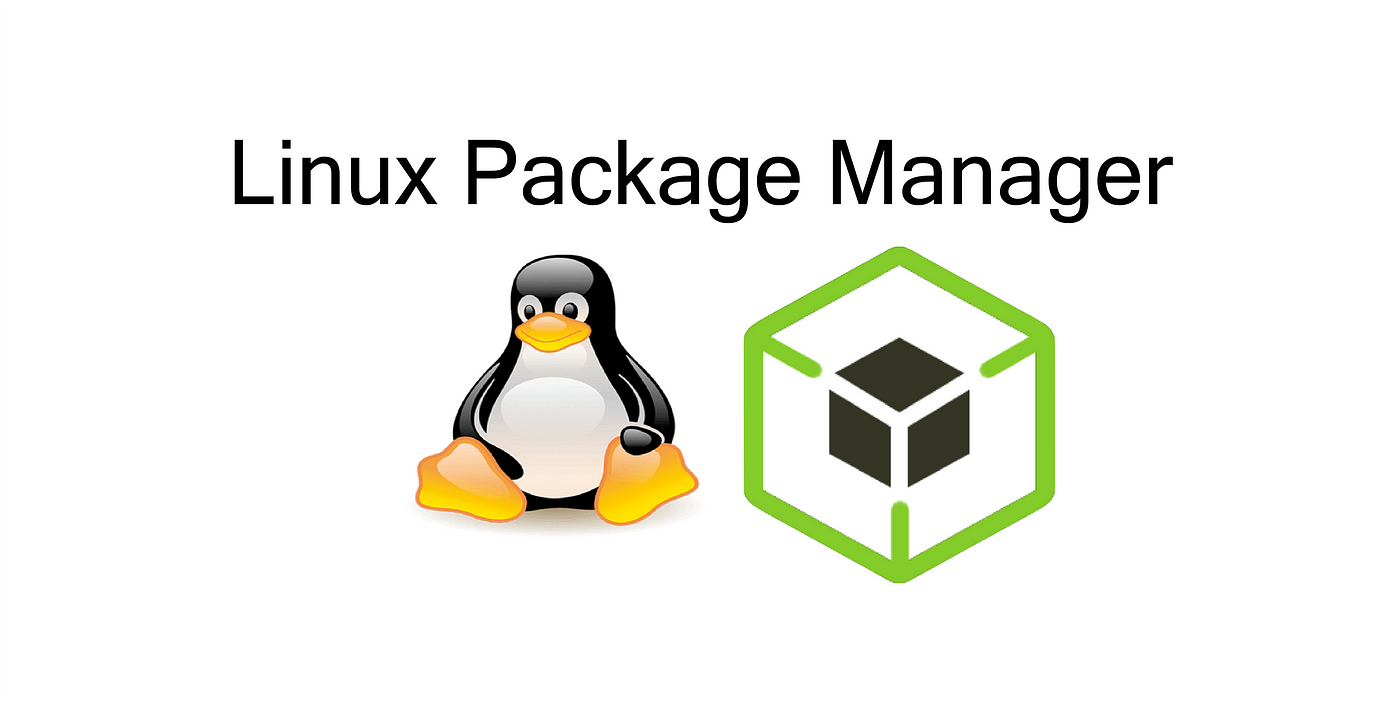Day-7: "Mastering Package Managers: Your Ultimate Guide to Seamless Software Management"
 salik satti
salik sattiTable of contents

What is a Package Manager?
Imagine you have a box of LEGO bricks, with each brick representing a piece of software, such as a tool or a library, that you might need to build something amazing. Now, picture having a special assistant who can swiftly find the exact LEGO bricks you need, deliver them to you, and ensure they fit together perfectly. This assistant is akin to a package manager for your computer.
A package manager is a tool that simplifies the process of installing, updating, and managing software packages on your computer. Instead of manually downloading and configuring each piece of software, the package manager handles it for you, ensuring everything works together seamlessly.
What is a Package?
A package is a bundle of software that includes everything needed for it to run: the code, dependencies (other software it needs to work), and sometimes configuration files. Think of it as a pre-packaged meal that includes all the ingredients and instructions to make a complete dish.
For example, if you're building a web application, you might need a package that provides tools for creating user interfaces. The package would include the necessary files and dependencies to help you build the UI without having to write everything from scratch.
Different Kinds of Package Managers
There are various package managers tailored for different programming languages and operating systems. Here are a few common ones, explained in simple terms:
1. npm (Node Package Manager)
Used For: JavaScript and Node.js projects.
Example: Imagine you're building a web app and need a tool to help with animations. Instead of writing the animation code yourself, you can use npm to install a package called
animate.cssthat provides ready-made animations.npm install animate.cssThis command tells npm to download and set up the
animate.csspackage for your project.
2. pip (Python Package Index)
Used For: Python projects.
Example: You're working on a data analysis project and need a library to handle data manipulation. Instead of coding the data manipulation functions from scratch, you can use pip to install a package called
pandas.pip install pandasThis command tells pip to fetch the
pandaspackage and make it ready to use in your project.
3. apt (Advanced Package Tool)
Used For: Debian-based Linux distributions (like Ubuntu).
Example: You want to install a web server on your Linux machine. Instead of downloading and configuring the server manually, you can use apt to install a package called
nginx.sudo apt install nginxThis command tells apt to download and set up the
nginxweb server on your computer.
4. Homebrew
Used For: macOS (and Linux).
Example: You need a tool to help with software development, like Git. Instead of downloading and installing Git manually, you can use Homebrew to do it for you.
brew install gitThis command tells Homebrew to install Git on your macOS system.
Let's do some hands-on with the apt package manager on Ubuntu and install Docker and Jenkins using apt.
Installing Docker using APT
Update Your System:
sudo apt-get updateInstall Required Packages:
sudo apt-get install apt-transport-https ca-certificates curl software-properties-commonAdd Docker’s Official GPG Key:
curl -fsSL https://download.docker.com/linux/ubuntu/gpg | sudo apt-key add -Add Docker Repository:
sudo add-apt-repository "deb [arch=amd64] https://download.docker.com/linux/ubuntu $(lsb_release -cs) stable"Update Package Database:
sudo apt-get updateInstall Docker:
sudo apt-get install docker-ceStart and Enable Docker:
sudo systemctl start docker sudo systemctl enable dockerVerify Docker Installation:
docker --version
Installing Jenkins using APT
Update Your System:
sudo apt-get updateInstall Java: Jenkins requires Java to run. Install it using the following command:
sudo apt-get install openjdk-11-jdkAdd Jenkins Repository Key:
curl -fsSL https://pkg.jenkins.io/debian/jenkins.io.key | sudo apt-key add -Add Jenkins Repository:
sudo sh -c 'echo deb http://pkg.jenkins.io/debian-stable binary/ > /etc/apt/sources.list.d/jenkins.list'Update Package Database:
sudo apt-get updateInstall Jenkins:
sudo apt-get install jenkinsStart and Enable Jenkins:
sudo systemctl start jenkins sudo systemctl enable jenkinsAccess Jenkins: Open your web browser and go to
http://your_server_ip_or_domain:8080to access the Jenkins interface.
When you install software using a package manager, it often involves multiple steps beyond just copying files to the appropriate directories. This is where systemd comes into play, particularly for services (daemon processes).
Installation Process Overview
Package Download and Installation:
The package manager downloads the software package (e.g.,
nginx,docker,jenkins).It unpacks the files and places them in the appropriate directories.
Service Configuration:
If the software includes a service (daemon), the package typically includes a
systemdunit file. This file contains instructions on how to start, stop, and manage the service.The unit file is usually placed in
/etc/systemd/systemor `/lib
Understanding systemctl and systemd
What is systemd?
systemd is a system and service manager for Linux operating systems. It initializes the system and manages services, processes, and other system resources. Introduced as a replacement for the traditional System V init system, systemd aims to provide better efficiency, performance, and consistency across Linux distributions.
Key Features of systemd:
Parallel Service Startup: Starts services in parallel to speed up boot times.
On-Demand Activation: Services can be started on demand, reducing resource usage.
Unified System Configuration: Provides a unified way to configure the system and services.
Logging: Integrated logging via
journaldfor centralized and consistent logging.
What is systemctl?
systemctl is the command-line utility used to interact with systemd. It allows you to manage and control systemd services and units. With systemctl, you can start, stop, restart, enable, and disable services, among other tasks.
Common systemctl Commands:
Start a Service:
sudo systemctl start service_nameExample:
sudo systemctl start nginxStop a Service:
sudo systemctl stop service_nameExample:
sudo systemctl stop nginxRestart a Service:
sudo systemctl restart service_nameExample:
sudo systemctl restart nginxEnable a Service (Start at Boot):
sudo systemctl enable service_nameExample:
sudo systemctl enable nginxDisable a Service (Do Not Start at Boot):
sudo systemctl disable service_nameExample:
sudo systemctl disable nginxCheck Service Status:
sudo systemctl status service_nameExample:
sudo systemctl status nginxList All Services:
sudo systemctl list-units --type=service
Example: Managing Docker and Jenkins with systemctl
Starting Docker
Start Docker:
sudo systemctl start dockerEnable Docker to Start on Boot:
sudo systemctl enable dockerCheck Docker Status:
sudo systemctl status docker
Starting Jenkins
Start Jenkins:
sudo systemctl start jenkinsEnable Jenkins to Start on Boot:
sudo systemctl enable jenkinsCheck Jenkins Status:
sudo systemctl status jenkins
Conclusion
In summary, a package manager is like a helpful assistant that makes it easy to find, install, and manage software packages. Packages are pre-bundled software components that include everything you need to run them. Different package managers are designed for different programming languages and operating systems, making it easier to work with various technologies. By using package managers, you can save time, avoid errors, and ensure that all the software you need works well together. Whether you're building a web app, analyzing data, or setting up a server, there's a package manager to help you get the job done efficiently. Happy coding!!
Subscribe to my newsletter
Read articles from salik satti directly inside your inbox. Subscribe to the newsletter, and don't miss out.
Written by

salik satti
salik satti
Passionate Linux developer and avid learner with a strong foundation in Programming (c/c++,Python), shell scripting, and automation. Continuously exploring the depths of open-source technologies, striving to enhance skills and contribute to innovative projects. Dedicated to mastering the intricacies of Linux and leveraging its power to build efficient, scalable, and secure solutions.